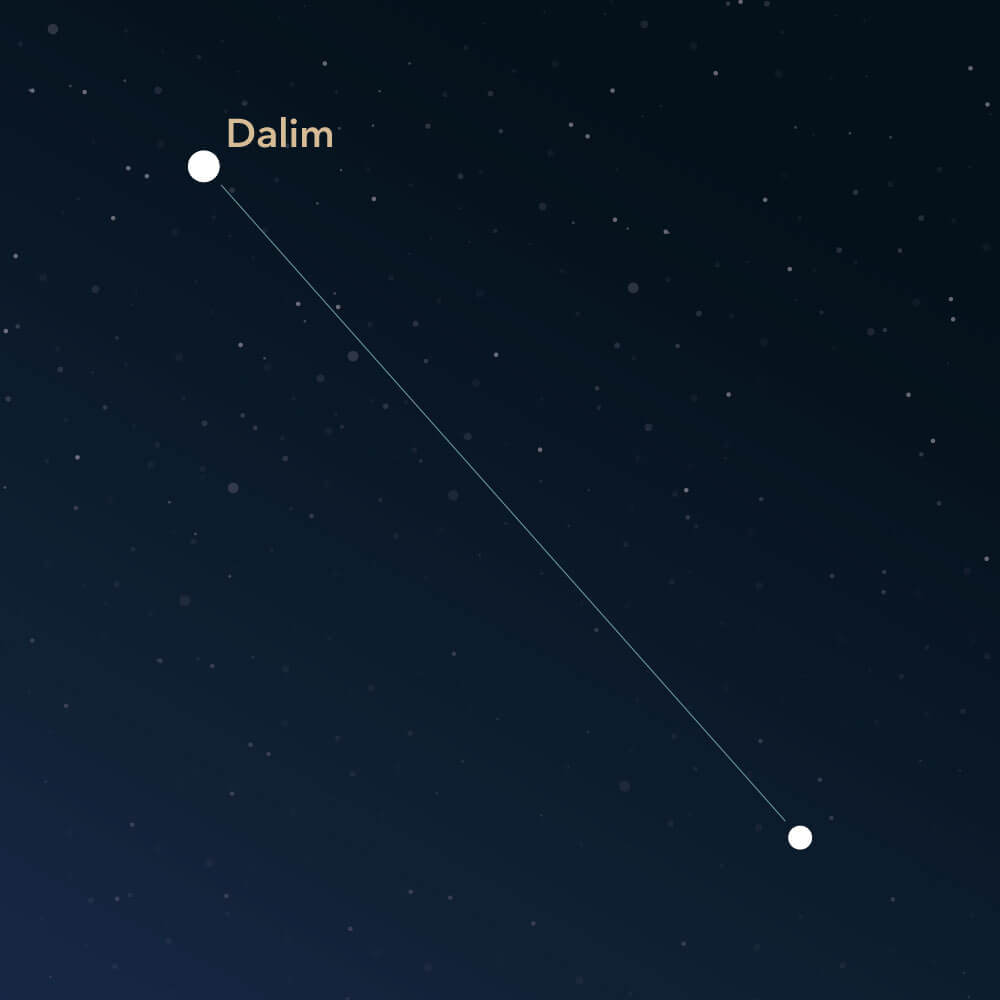The constellation Fornax
Characteristics
- Other names / Symbolism
- Chemical Furnace, The Brazier
- Hemisphere
- Southern hemisphere
- Visibility
- September - January
- Area
- 398 deg²
- Brightest star
- Dalim (HIP number 20010)
- Specialties
- Galaxies, planetary nebula

The Fornax symbolizes a chemical furnace or, rather, a brazier. It is an inconspicuous southern constellation and contains mainly dim stars. But despite its unremarkable appearance, it has exciting deep-sky objects to discover.
Hemisphere, visibility, and area
The Fornax is a constellation in the southern night sky. However, it can also be observed from the northern hemisphere, up to a latitude of 50 degrees, which is roughly equivalent to Cologne in Germany or Vancouver in Canada. South of the equator, it can be seen from everywhere. The best time to observe the constellation is from September to January.
It is almost completely surrounded by the constellation Eridanus and has only three other neighbors. To the northeast, it borders on the constellation Cetus. In the east is the constellation Sculptor, and in the south lies the Phoenix.
Compared to the other 88 constellations, Fornax is medium-sized. With its 398 square degrees, it ranks 41st.
Most visualizations show Fornax as a line connecting two stars. Other depictions include an additional star, resulting in a bent line.
The constellation contains only faint stars, with almost none brighter than the fourth magnitude. Dalim (Latin: α Fornacis, Alpha Fornacis) is the most shining star in Fornax. It is a double-star system located about 40 light-years away. The two stars in this double-star system are of different colors and have spectral classes F7 and G7. Thus, they are visible with a small telescope. The apparent magnitude of Dalim is roughly 3.9.
Specialties in the constellation
In the area lies the Fornax galaxy cluster, named after the constellation. It is one of the nearest galaxy clusters known, at approximately 60 million light-years from earth.
The most popular galaxy within the Fornax galaxy cluster is the barred spiral galaxy NGC 1365. It is located around 68 million light-years away and has a diameter of 200,000 light-years. When viewed from earth, the galaxy rotates clockwise. A complete rotation takes about 350 million years. NGC 1365 lies southwest of the area of the Fornax, just on the border to Eridanus.

Another interesting object is the Fornax dwarf galaxy (ESO 356-04 and MCG -06-7-001). The American astronomer Harlow Shapley discovered it on photographic plates less than a hundred years ago. It has an apparent brightness of about 9.3 mag and is located approximately 450,000 light-years away from earth.
The location of the Furnax away from the Milky Way provides an excellent opportunity for observing the galaxies. An amateur telescope is sufficient for this purpose. Only the Fornax dwarf galaxy can be perceived in long-exposure photographs.
In addition to the Fornax galaxy cluster and various other galaxies, the constellation also contains a planetary nebula. However, this is only weakly visible. To see the nebula clearly, a medium-sized telescope is required.
History
As a result of the invention of the telescope, the French astronomer Nicolas Louis de Lacaille measured the positions of numerous stars from the Cape of Good Hope close to Cape Town in South Africa. In doing so, he identified some areas that had not yet been assigned to a constellation and consequently defined new constellations in the middle of the 18th century.
While the 48 constellations of antiquity bear the names of mythological figures, he used terms of technological innovations. Among them was the melting furnace "le Fourneau," which was later included in the star chart as "Fornax Chimiae."
The inspiration for this name came from his student Antoine Laurent de Lavoisier. He was an enthusiastic natural scientist who later made remarkable discoveries. However, despite his scientific work, he was sentenced to death during the French Revolution.
PublishedRead more interesting articles

An overview of all 88 constellations
Learn more about all 88 constellations and read interesting information about the mythology, visibility, and features.

Planetarium App
Discover the night sky with our planetarium app!
Available for iOS and Android.

Name a star in the constellation Fornax
Name a star in a constellation and create something that lasts for eternity.